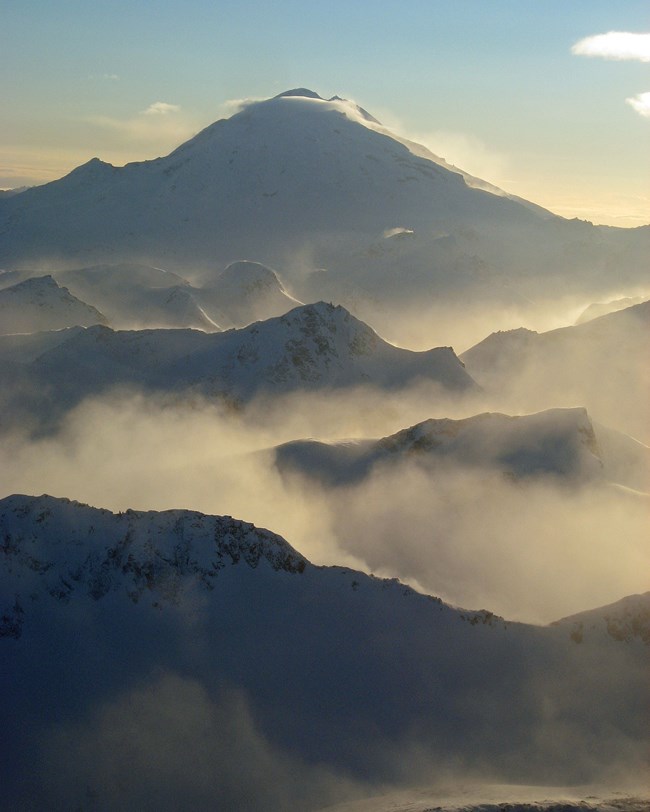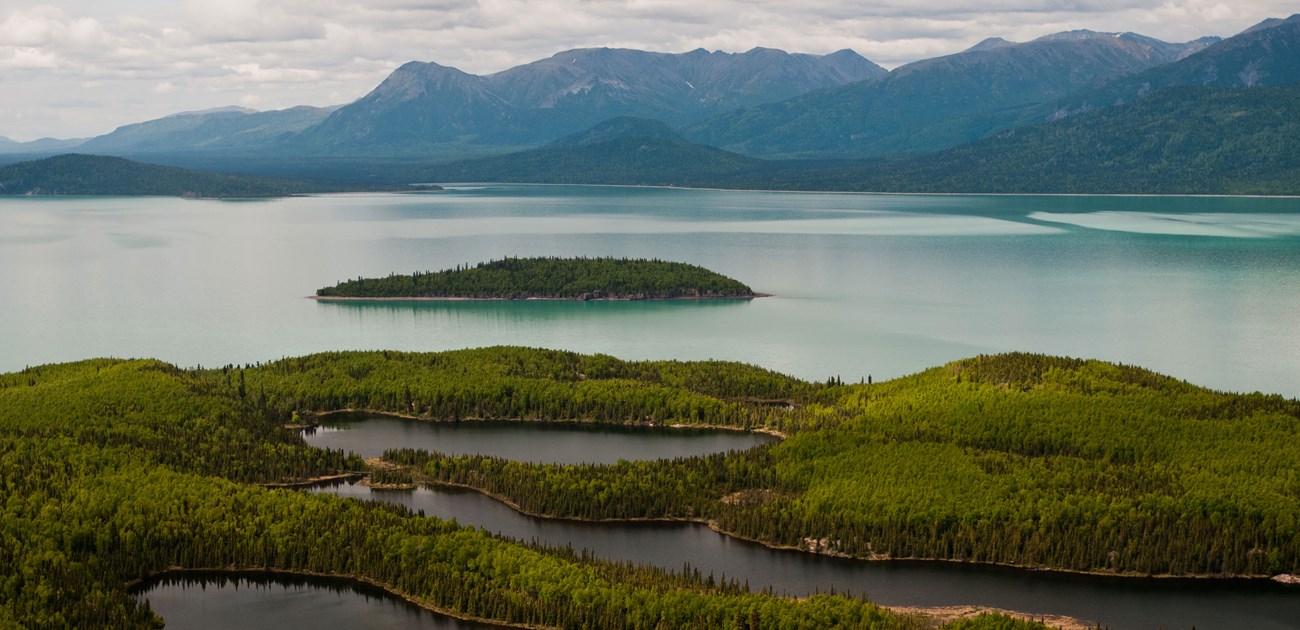Last updated: July 10, 2024
Article
NPS Geodiversity Atlas—Lake Clark National Park & Preserve, Alaska
Geodiversity refers to the full variety of natural geologic (rocks, minerals, sediments, fossils, landforms, and physical processes) and soil resources and processes that occur in the park. A product of the Geologic Resources Inventory, the NPS Geodiversity Atlas delivers information in support of education, Geoconservation, and integrated management of living (biotic) and non-living (abiotic) components of the ecosystem.

Introduction
Lake Clark National Park and Preserve (LACL) is on a geologically northern extension of the Alaska Peninsula rock units where the Aleutian Range transitions to the Alaska Range approximately 130 km (81 mi) southwest of Anchorage in the Bethel, Kenai Peninsula, Lake and Peninsula, and Matanuska–Susitna Boroughs, Alaska. Originally established as Lake Clark National Monument on December 1, 1978, the park unit was upgraded to a national park and preserve on December 2, 1980. Lake Clark National Park and Preserve encompasses ~1,630,936 hectares (4,030,130 acres) of geologically diverse landscape that includes jagged peaks, granite spires, two active volcanoes, and a score of glacially carved lakes (Anderson 2017). The park unit namesake, Lake Clark, is over 64 km (40 mi) long, covers an area of 332 km2 (128 mi2 ), and supports a diverse ecosystem. The lakes, rivers, and streams of LACL are part of the spawning grounds for one of the world’s largest salmon runs of Bristol Bay, and the park is home to the only known salmon-dependent wolf pack.

Geologic Setting
Situated in one of the most geologically active regions of North America, the geology of LACL reflects the dynamic processes associated with plate tectonics, volcanism, and glaciation. There are several faults in LACL, the longest of which is the 225 km (140 mi)-long Lake Clark Fault situated beneath Lake Clark and Lake Clark Pass. The bedrock geology in the park and preserve predominantly consists of Mesozoic rocks that have been uplifted in the Jurassic and subsequently eroded by glaciers. Numerous Quaternary-age, unconsolidated deposits in LACL include Wisconsin-age glacial deposits of the Brooks Lake Glaciation, deltaic and estuarine deposits, as well as younger volcanic rocks. Most of the southern portion of the park, east of Lake Clark, consists of sedimentary and metamorphic rock of Mesozoic age. The geology in the northern half of the park is dominated by Tertiary and Mesozoic intrusive rocks (Dale and Stottlemyer, 1986). In detail, the geology and associated structure are very complex with igneous, metamorphic and sedimentary lithologies interacting at various scales.
Plate Tectonics
Lake Clark is the scene of a dynamic, living geology. A young landscape shaped by uplift, intrusion, earthquakes, volcanism, and glaciation. The Aleutian Range in Lake Clark is a segment of the circum-pacific Ring of Fire, one of the most active volcanic belts in the world. Quaternary volcanism in the Aleutians is the result of plate convergence and subduction, approximately 7.0 cm/year, between the American and Pacific plates (Kienle and Swanson, 1983). Modern tectonism is evident from the frequent strong earthquakes and four active volcanoes in the region (Redoubt, Illiamna, Augustine, and Douglas). Clusters of shallow and deep seismicity, with some magnitudes exceeding 6.0 on the Richter scale, have been recorded beneath Iliamna, Augustine, and Douglas volcanoes (Hampton, 1982).
Two major thrust faults are located within the park. The Bruin Bay Fault can be traced 300 miles from Becharof Lake on the Alaska Peninsula to Mount Susitna, northwest of Anchorage, bisecting Chinitna and Tuxedni bays. The Lake Clark Fault, also referenced as the Castle Mountain Fault by Stone (1983), runs approximately 80 miles to the northeast end of Lake Clark (Alaska Geographic Society, 1986).
The Lake Clark Fault underlies Lake Clark, structurally producing the lake's long linear geometric shape. The fault is characterized by a right lateral displacement of approximately 8 miles (Ivanhoe, 1962).
Volcanoes
Although the active Redoubt and Iliamna volcanoes are geologically young (forming ~880,000 years ago), older igneous rocks provide evidence of volcanic activity as far back as 190 million years ago.
Paleontology
The park and preserve contains a rich assemblage of marine invertebrate fossils from Jurassic units, including bivalves, ammonites, and belemnites.
- Scoping summaries are records of scoping meetings where NPS staff and local geologists determined the park’s geologic mapping plan and what content should be included in the report.
- Digital geologic maps include files for viewing in GIS software, a guide to using the data, and a document with ancillary map information. Newer products also include data viewable in Google Earth and online map services.
- Reports use the maps to discuss the park’s setting and significance, notable geologic features and processes, geologic resource management issues, and geologic history.
- Posters are a static view of the GIS data in PDF format. Newer posters include aerial imagery or shaded relief and other park information. They are also included with the reports.
- Projects list basic information about the program and all products available for a park.
Source: NPS DataStore Saved Search 2998. To search for additional information, visit the NPS DataStore.
A NPS Soil Resources Inventory project has been completed for Lake Clark National Park and can be found on the NPS Data Store.
Source: NPS DataStore Saved Search 3045. To search for additional information, visit the NPS DataStore.

Related Links
Related Articles
Lake Clark National Park
National Park Service Geodiversity Atlas
The servicewide Geodiversity Atlas provides information on geoheritage and geodiversity resources and values within the National Park System. This information supports science-based geoconservation and interpretation in the NPS, as well as STEM education in schools, museums, and field camps. The NPS Geologic Resources Division and many parks work with National and International geoconservation communities to ensure that NPS abiotic resources are managed using the highest standards and best practices available.


